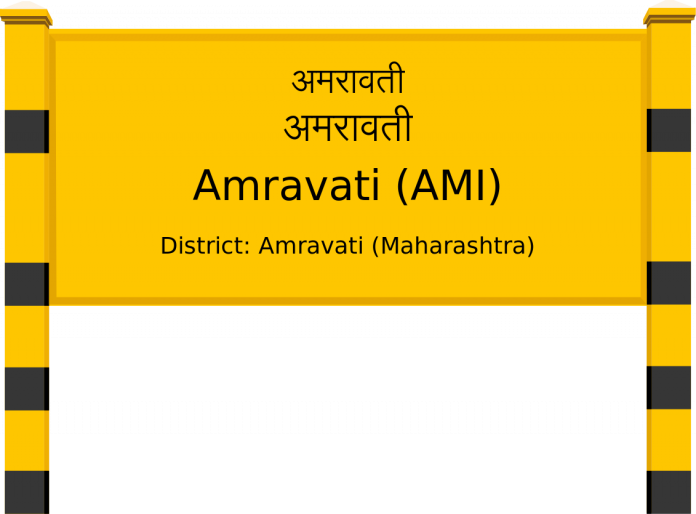This article is written by Bhumika Dandona from the School of Law, Sushant University, Gurgaon. This article briefly discusses the reasons that led to the selection of the capital city. It is followed by all the aspects in relation to the Amaravati land scam.
Table of Contents
Introduction
On 22nd October 2015, Amaravati became the new capital of Andhra Pradesh. Former Chief Minister of the state, N. Chandrababu Naidu, declared the same, intending to make Amaravati the Smart City of India. The TDP (Telugu Desam Party) Government obtained 33,000 acres of land by combining chunks of land for building the capital into one of India’s acclaimed places.
Since not too long ago, the city has been under the intense scrutiny of the present government and other authorities. What induced such perusal is foul land buying. Claims made suggest that under the garb of developing Amaravati, numerous unlawful activities transpired. It has given rise to a continuing political and judicial debate that does not seem to end anytime soon.
Reasons that led to the selection of Amaravati as the capital city
There are several reasons for the selection of Amaravati by the Chandrababu government as the capital of Andhra Pradesh. Mentioned below are some of these main reasons:
Formation of Telangana
In 1965, Hyderabad became the capital of Andhra Pradesh. The state also incorporated several Telugu-speaking areas. People belonging to these regions feared neglect of their interests in view of the merger. The government promised to protect their interests, but a violent uprising broke out demanding the creation of Telangana. The Central Government conducted a meeting regarding it in 2013 and set up a Group of Ministers (GOM). Everyone agreed to the decision of creating Telangana. Andhra Pradesh then split into two in 2014. This bifurcation took place in accordance with the Andhra Pradesh Reorganisation Act, 2014. The Act also called for making Hyderabad the capital of the newly-formed state.
Historical background
The history of Amaravati is almost two-thousand years old. Located on the banks of river Krishna, it was a prosperous capital of the Satvahana kingdom. After the fall of the dynasty, the Pallavas annexed the river valley. Later on, the Chalukyas and the Cholas ruled the region till Amaravati became a part of the Telugu Empire. This empire was under the rule of the Kakatiyas at that time. As the rulers changed and different dynasties ruled the region where Amaravati existed, they kept adding to its history.
Amaravati’s history also has contributions by the Delhi Sultanate, the Vijayanagar Empire and the Mughal Empire. They occupied the city in succession. The Nizam of Hyderabad also acquired Amaravati at some point. Even the French and the British had colonised Amaravati in the 1700s. Apart from that, the city saw the coming of many Chinese travellers. Buddhist monk Hiuen Tsang too visited the place in 640 (Common Era).
Cultural background
Since several dynasties embraced Amaravati over centuries, it has a rich cultural heritage. The Satvahanas patronised Hinduism and Buddhism that empowered the city with rationality and enlightenment. When Ashoka came to power in the 2nd century (Before Common Era), he built a stupa here, known as the stupa of Amaravati. It was one of the biggest stupas of Andhra Pradesh. Engraved on it were the panels that highlighted the story of Gautam Buddha. The architectural structure of Amaravati conveyed the influence of Buddhist culture. Works of the Amaravati School of Architecture, heavily influenced by the Buddhist monasteries, are on display at museums in Chennai, England and Sri-Lanka.
Religious significance
Amaravati has great religious significance as well. Buddhism, Hinduism and Jainism co-existed here. Gautam Buddha once visited Dharani Kota, a place adjacent to Amaravati. He stayed there for a brief period. It happened back in 500 B.C.E. So, it is how Buddhism made its way into the city. Amaravati is also home to Buddhist relics. One can find various Shiva temples here as well.
The most famous temple is lord Amara Lingeshwara. It is why the new capital of Andhra Pradesh is also locally known as Amararamam. According to the ancient tales, when the tarkasur demon was dying, there was a Shiva linga in his throat. This Shiva linga broke into several pieces and fell out of his mouth at five different spots. Out of these spots, Amareshwar at Amaravati is the most important because people worshipped Lord Shiva here. Thus, Amaravati is also a site of pilgrimage for Hindus and Buddhists.
Suitable location
Aside from the bifurcation, historical, cultural and religious importance, another reason for the selection of Amaravati as the capital of Andhra Pradesh is its location. As mentioned earlier, it has its location on the banks of the river Krishna in the district of Guntur. Also, Amaravati is easily approachable from every area of the state due to the availability of efficient railway networks in the region. So it would be an ideal capital for proficient administration, economic development and cultural unification because of its orientation.
The abundance of water resources
Amaravati receives abundant water flow from the river Krishna and inland water reservoirs. Also, the city serves as one of the tributaries of the Kaveri river (Amaravati river). Thus, shortage of water would never be a problem here.
About the Amaravati land scam
Discovery of the land scam
The scam first came to light in 2019 with the coming of the new government in Andhra Pradesh. After the Yuvajana Sramika Rythu Congress Party (YSRCP) won elections and came to power, Chief Minister Y.S. Jagan Mohan Reddy declared that the state would have three different capitals. The first capital would remain Amaravati, housing the legislative system. The second capital would be Visakhapatnam which would incorporate the administrative system, and finally, the third one would be Kurnool, serving as the judicial capital.
But when the contracting companies acquired the land in Amaravati, they came across some irregularities in its transaction details. The companies discovered that land transfers had occurred illegally and were against the norms. When informed about it, the Andhra government alleged these irregularities to have taken place under the former government’s (Telugu Desam Party) rule and set up a Cabinet Sub-Committee (CSC) to investigate the matter. The committee panel, headed by Finance Minister Buggana Rajendranath, suspected that the ministers belonging to TDP gave way to insider trading in Amaravati. It also involved CID (Crime Investigation Department) in probing the entire case.
Report of the CID
An investigation by CID disclosed that the Amaravati land scam dates back to the creation of the capital itself. The land in question is approximately 761 acres. There were registrations of chunks of this land, which is worth Rs.200 crores, in the names of those who could barely ensure their survival.
Those with an income below Rs.5000 appeared to have bought the land. These buyers, around 797 in number, were white ration card-holders and resided in the Guntur district. Many buyers did not even have a valid PAN Card and had not paid their income tax. Forged documents were issued in their names to carry out the transactions. Forgery came into effect in Thullur Mandal, one of the mandals of the district. Sale transactions ensued between 2014 and 2015. It is also the place where city planning for the capital took place.
CID also chanced upon some documents, which revealed the involvement of many politicians in the land scam. These politicians purchased pieces of land in ‘benami’ names, keeping the landowners in the dark. The authority gathered enough evidence that ascertained the same. A member of the legislative council of the state bought around 25 acres of land in 7 districts. An ex-minister purchased lands in several villages of the capital. These politicians made such transactions even before the announcement of the city becoming the capital.
The final verdict of the committee
After compiling all the documents and shreds of evidence, the committee concluded that numerous politicians of TDP indeed have links with the scam. On this basis, the YSRCP government accused Naidu, Dhulipalla Narendra, Putta Mahesh Yadav and other TDP politicians of the same. A BJP member was also a part of it. The government then formed a Special Investigation Team (SIT) to make further inquiries. It also insisted on a CBI investigation into the case.
The recent developments and judicial pronouncements
An advocate named Komalta Srinivasa Swamy Reddy filed an FIR at the Anti-Corruption Bureau against Dammalapati Srinivas, a former Attorney General in Guntur in September 2020. According to the claims made by him, the former AG and eleven others deceptively bought lands in Amaravati. He was in close connection with the former government then and used his position to gain an insight into the plans for the capital city. With the announcement of Amaravati as the new capital, prices of the land began touching the skies. It instigated his greedy nature, and he purchased the grounds in the name of poor farmers. The FIR also listed the involvement of daughters of a Supreme Court judge in this plotting.
The High Court’s orders
Afterwards, advocate Reddy filed a writ petition under Article-226 of the Indian Constitution, 1949 in the High Court of Andhra Pradesh. In the petition, he stated that the State police and the State Government are trying to falsely accuse him of purchasing the lands of Amaravati illegally. He requested protection from any action that the respondents may take on this behalf. He also appealed that the Court keep a watch on all the investigations of the Amaravati land scam. On hearing the parties present, the High Court directed that the FIR shall not be made public in any form and called for action by the Ministry of Information and Broadcasting in this respect. It also ordered a stay on the land scam investigation by SIT for the time being.
The State of Andhra Pradesh v. Dammalapati Srinivas & Ors.
The Andhra government filed an appeal against the orders of the High Court in the Supreme Court. It stated that stopping the investigation by SIT when it was at an essential juncture would result in the loss of crucial evidence. Respondents also submitted that the writ petition filed by advocate Reddy was not based on real facts. It was more of a reaction out of a political dispute.
In November 2020, the Supreme Court put a stay on the gag order passed by the High Court. It directed that the FIR against the former AG and others shall not be made public until further notice. Further, the three-judge bench comprising Justice Ashok Bhushan, Justice M.R. Shah and Justice R. Subhash Reddy instructed the High Court not to pronounce any judgment on the matter.
The Apex Court adjourned the hearing on the appeal in February 2021. It asked the respondents to submit their response by 5th March.
Conclusion
Amaravati has become a subject of controversy. Several promises made to create a world-class capital city remain incomplete to date. Rather than focusing on its development, people in power looked after their selfish interests and engaged in illicit activities. It prompted those who had been investing in Amaravati to pull out of the infrastructural projects.
They vowed that under no circumstances would they ever spend their money in Andhra Pradesh, depriving the state of worthwhile developmental opportunities. It has pushed the capital back by many years. Although the Jagan-led government had announced that it would start work on its development again, the recovery of Amaravati as one of the sought after places is still a distant dream. There is a need for setting up efficient organisations in the capital to prevent people from carrying out illegal activities.
References
- https://www.indianeagle.com/travelbeats/amaravathi-capital-of-andhra-pradesh/
- https://www.thehindu.com/news/cities/Hyderabad/cid-names-10-top-politicians-in-capital-region-land-scam/article30640451.ece/amp/
- https://www.deccanchronicle.com/nation/current-affairs/281219/tdp-chief-involved-in-insider-trading-in-amaravati-capital-region-cab.html
- https://www.google.co.in/amp/s/www.nationalheraldindia.com/amp/story/india%252Fandhra-pradesh-land-scam-767-poorest-people-are-owners-of-indian-rupee220-crores-land-in-amravati
- https://timesofindia.indiatimes.com/india/n-chandrababu-naidu-behind-land-scam-in-amaravati-andhra-sit/articleshow/78069571.cms
- https://www.nationalheraldindia.com/india/amravati-land-scam-ap-govt-moves-sc-against-hc-order-barring-media-reportage-and-police-investigation-on-fir
- https://www.financialexpress.com/india-news/amaravati-land-scam-supreme-court-stays-andhra-hc-order-gagging-media/2136781/
LawSikho has created a telegram group for exchanging legal knowledge, referrals and various opportunities. You can click on this link and join:
 Serato DJ Crack 2025Serato DJ PRO Crack
Serato DJ Crack 2025Serato DJ PRO Crack











 Allow notifications
Allow notifications



